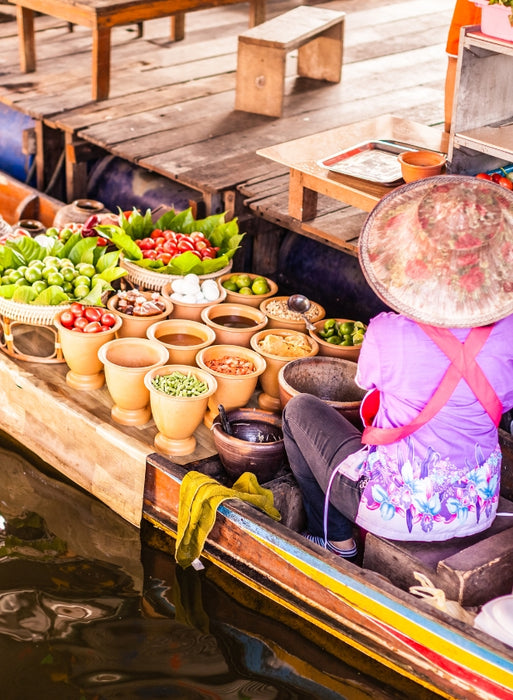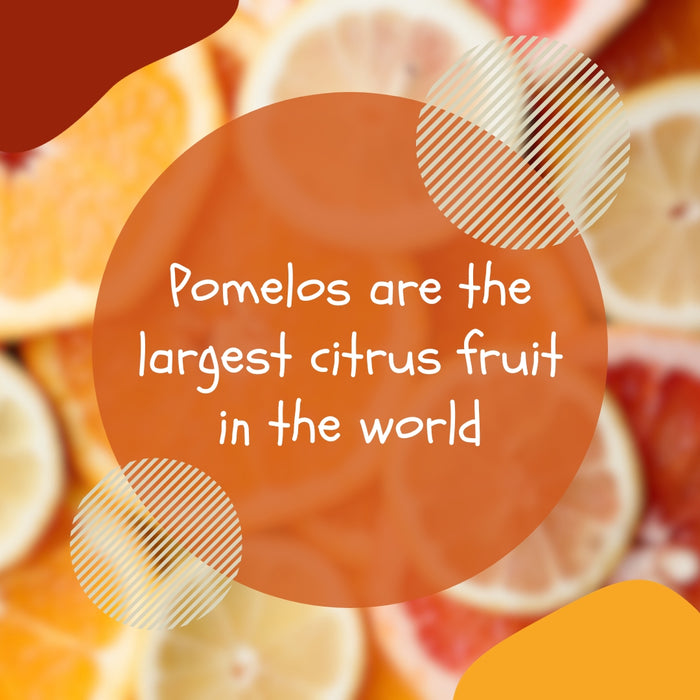A Brief History of Soju: Exploring Korea's Popular Traditional Alcohol
Diving headfirst into the vibrant depths of Korean traditional drinks, few names arise as ubiquitously or carry as much cultural weight as the clear, potent spirit: Soju. This unique drink, with its undeniable grip on the drinking culture of Korea, has traveled through centuries of evolution to reach your dining tables and party nights today. From royal court gatherings to modern bars' bustling energy, Soju's journey is a thrilling narrative worth delving into. Allow us to take you on a captivating ride tracing the origins and evolution of Soju, weaving an enchanting tale of tradition, strength, taste, and most importantly—culture!
Soju has a rich and varied history, dating back to the Three Kingdoms period in Korea. Originally made from rice brews fermented with nuruk starter, it was modified with distillation techniques introduced by the Mongols. During the Japanese colonisation, thousands of recipes were lost, leading to more standardized production. Today, soju remains one of the most consumed beverages in South Korea, with diluted green bottle soju being the most popular variety.
Soju: Roots and Traditional Brewing
Soju, the beloved alcoholic beverage of South Korea, has roots that date back centuries. Its traditional brewing methods and cultural significance make it a fascinating subject to explore. Originally, Korean people brewed rice-based beverages fermented with nuruk starter. The brewing process involved the use of nuruk, a type of fermenting agent made from various ingredients like wheat or barley, which kickstarted the fermentation of rice.
In these traditional brews, the clear liquid was reserved for royalty and the noble classes, while the commoners would enjoy the cloudy part. This clear liquid eventually evolved into what we now know as soju. However, the introduction of distillation techniques by the Mongols during their rule in Korea brought significant changes to the production of soju.
The Mongols introduced new distillation methods to Korea which were learned from Middle Eastern techniques used for making Arak, a popular distilled liquor in the region. These new distillation methods allowed for a purer and stronger form of alcohol to be produced.
During the Joseon era, alcohol brewing went underground due to restrictions imposed by the ruling class. Craftsmanship and knowledge were passed down through generations secretly within households. Women played a vital role in this hidden brewing tradition and crafted various home-brewed spirits. Unfortunately, many recipes were lost during Japanese colonisation when traditional brewing practices were destroyed and banned.
Soju's path to popularity took an interesting turn when rice production couldn't keep up with demand. To combat this issue, producers started using alternative starches like sweet potatoes or tapioca as substitutes for rice. This led to the advent of diluted soju, commonly known as green bottle soju, which is diluted with sweeteners to achieve lower alcohol content.
In 1973, regional producers were established, catapulting green bottle soju to become an integral part of industrial South Korea. However, this industrialisation led to a decline in the quality and authenticity of the traditional soju.
Now that we've explored the roots and traditional brewing methods of soju, let's examine its influence from the Three Kingdoms period in Korea.
Influence from the Three Kingdoms
During the Three Kingdoms period (57 BCE - 668 CE), which encompassed the territories of Goguryeo, Baekje, and Silla, soju played a significant role in Korean society. The kingdoms had different brewing traditions and techniques, contributing to soju's rich diversity even back then.
For instance, Goguryeo, known for its strong warrior culture, developed a type of soju called Geonbaekju. This powerful beverage was often consumed by warriors to boost their morale before battle. Geonbaekju was made by distilling fermented grains to achieve high alcohol content, which acted as a source of energy and courage on the battlefield.
Baekje, on the other hand, had an affinity for fruit-based alcohol production. Known as Baeju or Baekseju, this style incorporated fruits like plums into the fermentation process alongside grains. The result was a sweet and fruity soju with a distinct flavor profile.
In Silla, which eventually unified the Korean Peninsula under its rule, soju took on a more refined form known as Andong Soju. This variant emphasized clarity and purity. It was produced using rice-based fermentation processes similar to those utilised during the Joseon era.
Like Goguryeo's Geonbaekju or Baekje's Baeju, Andong Soju showcased Korea's diverse regional variations of this beloved beverage.
As we can see, soju's influence from the Three Kingdoms period not only shaped its brewing techniques but also contributed to its cultural significance throughout Korean history.
- As of 2017, South Koreans consumed an estimated 3.6 billion bottles of Soju annually, that's around 86 bottles per adult in just one year.
- According to a report from 1973, the production of green bottle Soju became a critical part of South Korea's industrial growth.
- Since the lifting of restrictions on Soju production in 1996, the variety and diversity in this category have increased exponentially. These changes led to a significant decrease in alcohol content compared to earlier versions of the beverage.
Soju's Role in the Joseon Era
During the Joseon era in Korea, soju played a significant role in the social and cultural fabric of the society. It was a time when alcohol brewing went underground, and women became the keepers of the tradition. The process of making soju evolved during this period, as it was produced in homes as moonshine to bypass the strict regulations imposed by the ruling class.
Soju was not only a beverage but also a symbol of status and power. The clear part of the rice brew, known as "yangjo soju," was reserved exclusively for the royalty and noble class. They would enjoy this refined form of soju while others consumed the cloudy, lower-grade variant. This division based on clarity reflected the social hierarchy that prevailed during that time.
The techniques used for making this traditional alcohol were passed down from generation to generation through oral tradition, with each family having its own secret recipes. Unfortunately, thousands of these precious recipes were lost during Japanese colonisation, which severely impacted the Korean distilling industry and led to a decline in quality and diversity.
These homemade variations of soju had distinct characteristics and flavours, often tailored to personal preferences or regional traditions. Some families added medicinal herbs or fruits to enhance the taste, resulting in unique blends that were cherished within their communities. However, due to these variations and lack of standardisation, it was challenging to define a single recipe or flavour profile for traditional Joseon-era soju.
An example of how deeply ingrained soju was in Korean society during this era is captured in literary works such as "Jungin" by novelist Yi Kwang-su. In this novel, soju is portrayed as an integral part of daily life, used for celebratory occasions, mourning rituals, and bonding between friends and family members.
 "As they all sat down around a small pot filled with warm soju, they knew it was going to be another night full of laughter and heartfelt conversations.
"As they all sat down around a small pot filled with warm soju, they knew it was going to be another night full of laughter and heartfelt conversations.
It is essential to understand the historical context and significance of soju during the Joseon era to appreciate its transformation and evolution over time.
As we've explored the traditional role of soju in the Joseon era, we now transition into examining the rise of homemade moonshine, which contributed to the rich tapestry of this beloved Korean spirit.
Rise of Homemade Moonshine
During the Joseon era, restrictions on alcohol production forced Koreans to resort to clandestine methods. Women became adept at distilling soju in their homes, bringing back ancient techniques that were handed down through generations.
These homemade versions of soju, known as "tongsu," were made using simple setups and limited resources. Large earthenware jars called "hangari" served as fermentation vessels, while nuruk, a starter culture made from fermented rice or wheat, initiated the fermentation process.
The popularity of homemade moonshine grew rapidly during this period, primarily due to its low cost and accessibility. It provided an opportunity for ordinary citizens to enjoy a drink that was typically reserved for the upper class. The flavors and qualities of this moonshine varied from region to region and even household to household.
 In remote villages nestled within Korea's picturesque landscapes, mothers and grandmothers would gather around steaming pots, skillfully crafting batches of soju using secret techniques perfected over centuries.
In remote villages nestled within Korea's picturesque landscapes, mothers and grandmothers would gather around steaming pots, skillfully crafting batches of soju using secret techniques perfected over centuries.
One particular village in Gyeonggi Province was renowned for its homemade soju distilled by women known as "soju ajummas." These enterprising women became experts in refining their craft and fine-tuning recipes that produced unique flavors appreciated by locals and visitors alike.
However, due to its illicit nature and lack of quality control measures, early homemade moonshine wasn't without risks. The production methods varied greatly between households, leading to inconsistencies in the final product's alcohol content and taste. Consequently, the reputation of soju suffered during this period, with some even comparing its flavor to paint thinner or embalming fluid.
Despite the challenges and risks involved, the rise of homemade moonshine laid the foundation for the future evolution of soju. This era of covert distillation was a precursor to the transformations that would follow as soju became more accessible and adapted to changing societal needs.
Soju's Modernisation and the Green Bottle Phenomenon
Soju, South Korea's beloved traditional alcohol, has a long and fascinating history. However, it wasn't until the modern era that soju underwent significant changes that shaped its current popularity and cultural significance. In the mid-20th century, advancements in technology and shifts in consumer preferences led to the emergence of a phenomenon known as the "green bottle."
Traditionally, soju was made from rice brews fermented with nuruk starter, resulting in a cloudy liquid. The clear part was reserved for royalty, while everyone else consumed the cloudy part. However, industrialisation and urbanisation necessitated mass production methods for soju, leading to the introduction of distillation techniques influenced by Middle Eastern Arak-making processes brought by the Mongols.
With time, rice production struggled to keep up with the growing demand for soju. As a result, producers began using alternative starches such as tapioca or sweet potatoes. Additionally, to reduce costs and meet the market's preference for mild flavors, sweeteners were added to dilute the alcohol content. This new style of soju became known as "green bottle soju," referring to its distinctive green packaging.
Let me paint a picture for you: imagine sitting at a bustling Korean bar or restaurant with your friends. The iconic green bottle of soju is placed in front of you on a table adorned with countless small cups called "glasses." The sound of laughter fills the air as you pour each other shots of this refreshing spirit. It's almost like a rite of passage in Korean social culture.
The rise of green bottle soju revolutionised soju consumption in South Korea. Its lower alcohol content made it more approachable for casual social drinking without sacrificing taste. While traditionalists might argue that it departs from the authenticity and quality of original recipes, there's no denying the impact it had in making soju accessible and popular among the masses.
Now that we've explored soju's modernization and the advent of green bottle soju, let's delve into the post-restriction era, which brought about a variety explosion in the world of this beloved Korean alcohol.
Post-Restriction Era and Variety Explosion
Soju has always been an integral part of Korean culture but underwent a period of restriction during Japanese colonisation, leading to the loss of thousands of traditional recipes for Korean distilled liquor. However, after restrictions on soju production were lifted in 1996, a newfound freedom emerged for producers to experiment with different ingredients and flavors. This marked the beginning of an exciting era for soju enthusiasts.
With fewer regulations and barriers, soju producers began introducing a wide range of flavours and styles to cater to diverse consumer preferences. Fruit-infused soju, such as strawberry, watermelon, or apple-flavored variations, became popular choices particularly among younger drinkers. These innovative creations offered a refreshing twist on the classic taste while expanding the market for soju beyond its traditional boundaries.
Imagine our shelves adorned with colourful bottles featuring enticing flavours like peach, grapefruit, or even yogurt. It's a testament to how far soju has come since its humble beginnings. The availability of these varied options not only appeals to different taste profiles but also creates opportunities for exciting cocktail combinations and unique drinking experiences.
This period marked a shift from viewing soju purely as a social lubricant to recognising it as a versatile beverage suitable for different occasions. Whether it's enjoying a casual night out with friends or sipping on fruit-infused soju while relaxing at home, there's now something for everyone within this vibrant landscape.
Having explored the post-restriction era and the explosion of variety in the soju market, let's dive into the cultural significance that soju holds in South Korea today.
Soju's Cultural Significance in Korea Today
Soju, the beloved traditional Korean alcohol, holds immense cultural significance in Korea today. It is not merely a drink but a symbol of Korean heritage and identity. From traditional holidays to social gatherings, soju plays a central role in various aspects of Korean culture. Understanding its cultural significance sheds light on the deep-rooted traditions and values that have shaped Korean society.
Traditional holidays like New Year, Rice Planting Day, and Korea's Day of Thanks are occasions where alcohol is consumed to honor ancestors and exchange goodwill. Soju has been an integral part of these celebrations for generations. During New Year, it was believed that consuming soju would drive out diseases and bad spirits, ensuring a prosperous start to the year. Such rituals highlight the importance of soju as a symbol of protection and blessings.
Additionally, the celebration of Daeboreum, a traditional Korean holiday marking the first full moon of the lunar calendar, includes the consumption of "ear-quickening wine." This specific type of soju is believed to bring good news quickly for the upcoming year. The act of drinking this wine demonstrates Koreans' hope and eagerness for positive outcomes.
Another significant occasion where soju holds cultural importance is during 'Dano', an important holiday celebrating the transplanting of rice seedlings. During this celebration, a drink mixed with sweet flag called Changpoju is toasted to dispel evil spirits and promote health. This illustrates how soju has long been intertwined with rituals aimed at warding off negativity and fostering well-being.
In addition to religious and traditional festivals, soju remains a fixture in everyday life for Koreans. Meeting friends after work or gathering with colleagues often involves sharing meals alongside glasses of soju. Soju acts as a social lubricant, encouraging camaraderie and bonding among people. It promotes a sense of community and shared experiences, fostering connections in the fast-paced modern society.
It's important to note that Korean drinking culture comes with strict rules of etiquette. Holding a glass with two hands when receiving it from an elder, turning away from the elder while drinking, and finishing the first drink in one shot are examples of these customs. These etiquettes highlight respect for elders and reinforce hierarchical relationships within Korean society.
However, it is important to acknowledge that Korean drinking culture has evolved over time. In recent years, there has been an increase in alcohol consumption irrespective of occasion, moving away from traditional customs. Special cocktails like 'bomb drinks' and 'poktanju,' which involve mixing soju with other beverages or adding additional ingredients, have gained popularity among younger generations. This shift represents a blending of old traditions with modern influences, showcasing the dynamic nature of Korean culture.
Soju not only gives us a glimpse into Korea's past but also reflects its present cultural values. It remains an integral part of celebrations, rituals, and socialization, uniting people through shared experiences and deep-rooted traditions. Embracing the cultural significance of soju allows us to appreciate Korea's rich heritage and the role alcohol plays in shaping its vibrant society.
Soju holds immense cultural significance in Korea, not merely as a drink but as a symbol of Korean heritage and identity. It is an integral part of traditional holidays and social gatherings, promoting camaraderie, community, and well-being. The importance of soju in rituals aimed at warding off negativity and fostering blessings highlights its role as a symbol of protection and goodwill. While Korean drinking culture has evolved over time, soju remains a fixture in everyday life, reflecting Korea's past while showcasing its dynamic present cultural values.
Shop All Soju
Shop HiteJinro



 "As they all sat down around a small pot filled with warm soju, they knew it was going to be another night full of laughter and heartfelt conversations.
"As they all sat down around a small pot filled with warm soju, they knew it was going to be another night full of laughter and heartfelt conversations. In remote villages nestled within Korea's picturesque landscapes, mothers and grandmothers would gather around steaming pots, skillfully crafting batches of soju using secret techniques perfected over centuries.
In remote villages nestled within Korea's picturesque landscapes, mothers and grandmothers would gather around steaming pots, skillfully crafting batches of soju using secret techniques perfected over centuries.
